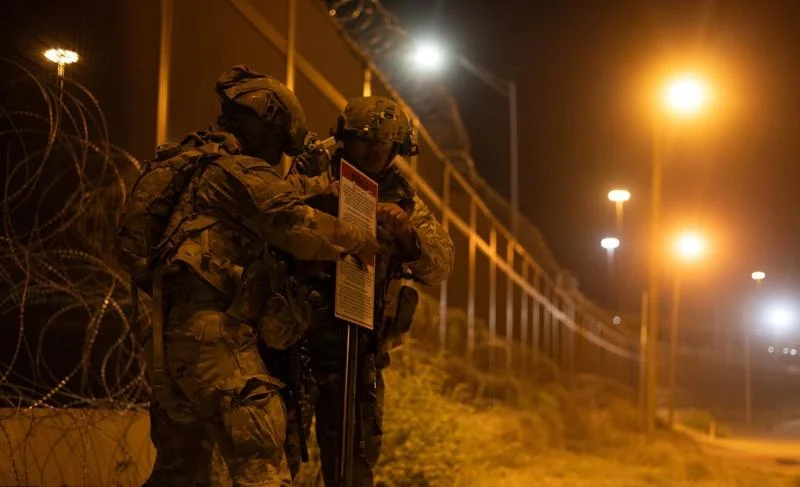The U.S. Department of Defense is establishing and expanding National Defense Area (NDA) operations along the southwest border, with two of three so far in Texas.
The first was established in New Mexico, the second in west Texas and the third in the Rio Grande Valley of Texas.
The NDA designation is an outworking of an executive order President Donald Trump issued in January directing the U.S. military to implement border security measures.
On his first day and week in office, Trump declared an invasion at the southwest border and issued multiple executive orders to secure it, including a DOD directive for United States Northern Command (USNORTHCOM) to “seal the borders and maintain the sovereignty, territorial integrity, and security of the United States by repelling forms of invasion including unlawful mass migration, narcotics trafficking, human smuggling and trafficking, and other criminal activities.”
By March, more than 10,000 U.S. troops were deployed to support southern border security efforts, The Center Square reported.
Joint Task Force-Southern Border (JTFSB) service members have been conducting enhanced detection and monitoring since March, including providing “mobile ground-based support to detect, track and monitor movements of suspected illegal activity using military tactical vehicles or foot patrols” in areas identified by U.S. Customs and Border Protection and Border Patrol, USNORTHCOM says.
In April, the first NDA was established in New Mexico to shut down illegal border crossings that increased under the state’s democratic governor, who refused to implement border security efforts. Illegal border crossings in New Mexico also increased after Texas increased its operations pushing illegal entries west, The Center Square reported.
The NDA spans approximately 170 miles of New Mexico’s land border with Mexico and falls under the jurisdiction of the Army’s Fort Huachuca. JTFSB members are tasked with temporarily detaining illegal border crossers, conducting cursory searches of trespassers on NDA property, providing emergency medical support to trespassers and assisting with installing border barriers, signage and fencing, USNORTHCOM said.
“Joint Task Force-Southern Border will conduct enhanced detection and monitoring, which will include vehicle and foot patrols, rotary wing, and fixed surveillance site operations,” USNORTHCOM Commander Gen. Gregory Guillot said.
In May, USNORTHCOM established its second NDA in West Texas, spanning approximately 63 miles of a US-Mexico land border between El Paso and Fort Hancock. It operates under the jurisdiction of the Army’s Fort Bliss. JTFSB members are already detecting and monitoring border activity through stationary positions and mobile patrols and temporarily detaining trespassers until they are transferred to federal immigration custody, Guillot said.
As USNORTHCOM operations continue to assist CBP efforts, U.S. attorneys are announcing hundreds of charges a week in New Mexico and Texas, The Center Square reported.
In just two weeks in May, dozens of criminal charges were filed against foreign nationals who illegally entered the NDA, with 60 pleading guilty and three convicted, the U.S. Attorney for the Western District of Texas announced.
“These convictions are a positive step in the judicial process of deterring illegal immigration,” Acting U.S. Attorney Margaret Leachman said, thanking “federal law enforcement and military partners for their diligent work in securing our borders.”
This month, the third NDA was established in Hidalgo and Cameron counties in the Rio Grande Valley of Texas.
The U.S. Air Force will manage the NDA, which spans approximately 250 miles along the Rio Grande River stretching to the Gulf of America. The NDA is on land transferred from the International Boundary and Water Commission through the General Services Administration and falls under the jurisdiction of Joint Base San Antonio.
The Secretary of the Air Force and Commander Guillot are coordinating a range of tasks, including installing signs and fencing in the NDA, “enhanced detection and monitoring through stationary positions and mobile patrols, temporarily detaining trespassers until they are transferred to the appropriate law enforcement authorities,” among other duties.






